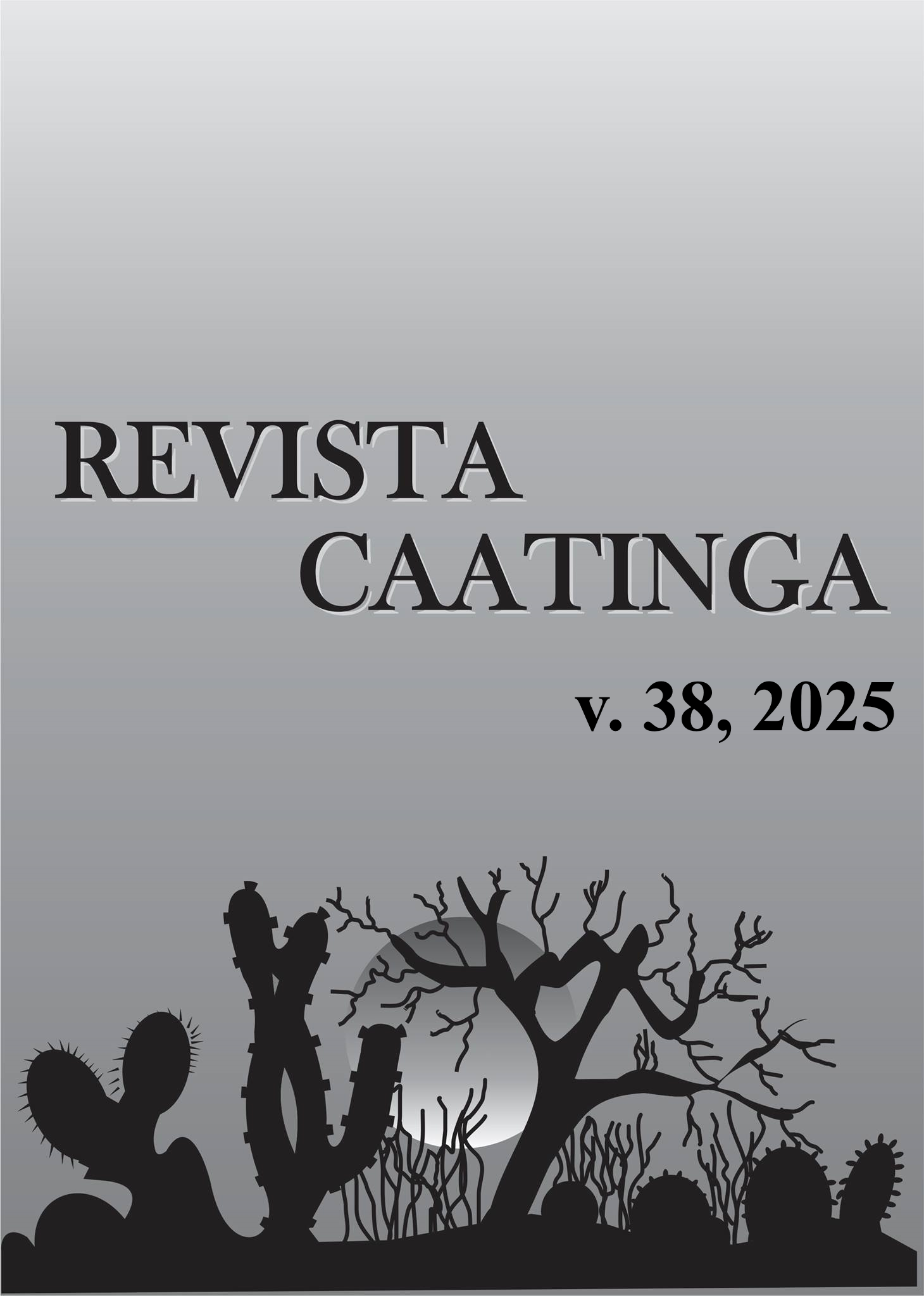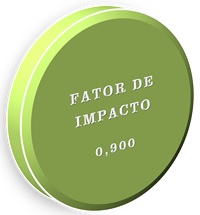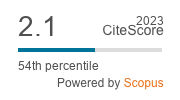Introgression of dwarfing genes into tomato fruit through backcrossing aiming at salad-type background
DOI:
https://doi.org/10.1590/1983-21252025v3812718rcAbstract
This study investigated the introgression of dwarfing genes via tomato populations through successive backcrosses, aiming to improve salad-type fruit quality and agronomic traits. Hybridization between the recurrent parent (UFU-57) and the dwarf donor parent (UFU MC TOM 1) was followed by three generations of backcrossing (BC1, BC2, BC3). The methodological steps included hybridization, selection of dwarf plants, and evaluation of agronomic traits and fruit quality. Significant improvements were observed in agronomic traits and nutritional quality of fruits, with UFU-DTOM 4#4-11-1 (BC3) showing the most substantial increase in fruit mass, achieving an 816% increase compared to the dwarf donor parent. The results indicate the effectiveness of backcrossing in restoring salad-type fruit traits and enhancing fruit weight, pulp thickness, and nutritional content such as β-carotene and lycopene. The conclusion highlights the importance of the third backcrossing generation in developing dwarf tomato lines with superior traits for the salad fruit market segment.
Downloads
References
BHERING, L. L. et al. Genetic gains in physic nut using selection indexes. Pesquisa Agropecuária Brasileira, 47: 402-408, 2012.
CAMMARERI, M. et al. Local Agro-Environmental Conditions Impact Fruit Quality, Sensory Properties and Consumer Acceptance of Long Shelf-Life Tomatoes. Agronomy, 13: 1265, 2023.
CRUZ, C. D. Genes Software – extended and integrated with the R, Matlab and Selegen. Acta Scientiarum Agronomy, 38: 547-552, 2016.
DIAS, D. M. et al. Acylsugars in tomato varieties confer resistance to the whitefly and reduce the spread of fumagine. Bragantia, 80: e4421, 2021.
FAOSTAT. The journey from poisonous curiosity to popular ingrediente. Available at: <https://www.fao.org/newsroom/story/The-journey-from-poisonous-curiosity-to-popular-ingredient/en>. Access on: Apr. 20, 2024.
FINZI, R. R. et al. The agronomic performance of mini-tomato hybrids from dwarf lines. Ciência e Agrotecnologia, 41: 15-21, 2017.
FINZI, R. R. et al. Agronomic potential of BC1F2 dwarf round tomato populations. Ciência e Agrotecnologia, 44: 1981-1829, 2020.
GASPARINI, K. et al. Natural Genetic Variation In The Hairs Absent (H) Gene Increases Type-Vi Glandular Trichomes In Both Wild And Domesticated Tomatoes. Journal of Plant Physiology, 280: 153859, 2023.
GOMES, D. A. et al. Selection of BC1F3 populations of Santa Cruz type dwarf tomato plant by computational intelligence techniques. Bragantia, 80: 1-12, 2021.
INGALLINA, C. et al. New hybrid tomato cultivars: An NMR-based chemical characterization. Applied Sciences, 10: 1887, 2020.
KLEIN, L. A. et al. Selection of superior black oat lines using the MGIDI index Crop. Crop Breeding and Applied Biotechnology, 23: e45112332, 2023.
KWON, C. et al. Rapid customization of Solanaceae fruit crops for urban agriculture. Nature Biotechnology, 38: 182-188, 2020.
LEITE, W. S. et al. Genetic parameters estimation, correlations and selection indexes for six agronomic traits in soybean lines F8. Comunicata Scientiae, 7: 302-310, 2016.
LI, N. et al. Identification of the Carbohydrate and Organic Acid Metabolism Genes Responsible for Brix in Tomato Fruit by Transcriptome and Metabolome Analysis. Frontiers in Genetics, 12: 714942, 2021.
LIU, X. et al. Is a Putative Candidate Gene for qtph1. 1, a Major-Effect Quantitative Trait Locus Controlling Tomato Plant Height. Frontiers in Genetics, 11: 881, 2020.
LONDOÑO-GIRALDO, L. M. et al. Gone wild: Integration of antioxidative, physicochemical, volatilomic and sensorial profiles ratify rustic relatives of cherry tomato as ideas mating partners. Scientia Horticulturae, 277: 1-10, 2021.
MACIEL, G. M.; SILVA, E. C. D.; FERNANDES, M. A. R. Dwarfism occurrence in tomato plant type grape. Revista Caatinga, 28: 259-264, 2015.
MARTI, E. et al. Genetic and physiological characterization of tomato cv. Micro-Tom. Journal of Experimental Botany, 57: 2037-2047, 2006.
OLIVEIRA, C. S. et al. Selection of F2 RC1 saladette-type dwarf tomato plant populations for fruit quality and whitefly resistance. Revista Brasileira de Engenharia Agrícola e Ambiental, 26: 28-35, 2022.
PANTHEE, D. R.; GARDNER, R. G. ‘Mountain Honey’ hybrid grape tomato and its parent NC 6 grape breeding line. Hortscience, 48: 1192-1194, 2013.
R DEVELOPMENT CORE TEAM. R: A language and environment for statistical computing. R Foundation for Statistical Computing. Vienna: R Foundation for Statistical Computing. 2022. Available at: . Access on: Jan. 21, 2023.
RAJENDRAN, S. et al. Tomato Yield Effects of Reciprocal Hybridization of Solanum lycopersicum Cultivars M82 and Micro-Tom. Plant Breeding and Biotechnology, 10: 37-48, 2022.
SCHWARZ, K. et al. Agronomic performance and physico-chemical quality in tomato hybrids grown without guiding. Horticultura Brasileira, 31: 410-418, 2013.
SIDDIQUI, M. W.; AYALA-ZAVALA, J. F.; DHUA, R. S. Genotypic variation in tomatoes affecting processing and antioxidant attributes. Critical Reviews in Food Science and Nutrition, 55: 1819-1835, 2015.
SUN, X. et al. Identification and characterization of EI (Elongated Internode) gene in tomato (Solanum lycopersicum). International Journal of Molecular Sciences, 20: 2204, 2019.
VAZQUEZ, D. V. et al. Genetic basis of the lobedness degree in tomato fruit morphology. Plant Science, 319: 111258, 2022.
WANG, Q. et al. Genetic analysis and mapping of dwarf gene without yield penalty in a γ-ray-induced wheat mutant. Frontiers in Plant Science, 14: 1133024, 2023.
WATI, R. K.; PAHLAWAN, M. F. R.; MASITHOH, R. E. Development of calibration model for pH content of intact tomatoes using a low-cost Vis/NIR spectroscopy: In: IOP CONFERENCE SERIES EARTH AND ENVIRONMENTAL SCIENCE, 2021, Yogyakarta. Proceedings... Yogyakarta: IOP Publishing, 2021, vol. 686.
ZHU, Q. et al. Redesigning the tomato fruit shape for mechanized production. Nature Plants, 9: 1659-1674, 2023.
ZSÖGÖN, A. et al. Genome editing as a tool to achieve the crop ideotype and de novo domestication of wild relatives: Case study in tomato. Plant Science, 256: 120-130, 2017.
Downloads
Published
Issue
Section
License
Os Autores que publicam na Revista Caatinga concordam com os seguintes termos:
a) Os Autores mantêm os direitos autorais e concedem à revista o direito de primeira publicação, com o trabalho simultaneamente licenciado sob a Licença Creative Commons do tipo atribuição CC-BY, para todo o conteúdo do periódico, exceto onde estiver identificado, que permite o compartilhamento do trabalho com reconhecimento da autoria e publicação inicial nesta revista, sem fins comerciais.
b) Os Autores têm autorização para distribuição não-exclusiva da versão do trabalho publicada nesta revista (ex.: publicar em repositório institucional ou como capítulo de livro), com reconhecimento de autoria e publicação inicial nesta revista.
c) Os Autores têm permissão e são estimulados a publicar e distribuir seu trabalho online (ex.: em repositórios institucionais ou na sua página pessoal) a qualquer ponto antes ou durante o processo editorial, já que isso pode gerar alterações produtivas, bem como aumentar o impacto e a citação do trabalho publicado (Veja O Efeito do Acesso Livre).







